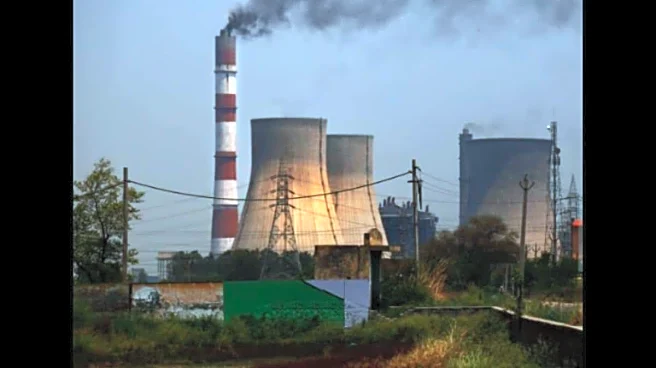India is no stranger to missile launches, with the Defence Research and Development Organisation (DRDO) and the Strategic Forces Command (SFC) regularly conducting tests of short-, medium-, and long-range
systems. But the 25 September test of the Agni Prime was not just another routine exercise. For the first time, the nuclear-capable intermediate-range ballistic missile was fired from a specially designed rail-based launcher, pulled by an Indian Railways locomotive.
Defence Minister Rajnath Singh hailed the launch as a “first-of-its-kind,” congratulating DRDO, SFC and the armed forces for successfully putting India in a select group of nations with canisterised launch capability from an on-the-move rail network.
India has carried out the successful launch of Intermediate Range Agni-Prime Missile from a Rail based Mobile launcher system. This next generation missile is designed to cover a range up to 2000 km and is equipped with various advanced features.
The first-of-its-kind launch… pic.twitter.com/00GpGSNOeE
— Rajnath Singh (@rajnathsingh) September 25, 2025
The demonstration means India now has the ability to launch a nuclear-capable missile not just from land silos, road-based canisters, aircraft and submarines, but also from its vast railway grid.
This rail mobility marks a significant step in India’s deterrence posture. It compresses adversary timelines, complicates targeting, and strengthens the credibility of India’s second-strike capability under its declared No First Use (NFU) doctrine.
What Is The Agni Prime Missile?
Agni Prime, also referred to as Agni-P, is the sixth missile in India’s Agni series. It is a two-stage, solid-propellant intermediate-range ballistic missile with a strike range of up to 2,000 km, covering critical targets across Pakistan and much of China.
The missile is canisterised, meaning it is stored and transported in a sealed launch tube. This allows the missile to remain mated with its warhead and ready to fire at short notice, unlike older liquid-fuelled systems that required extensive pre-launch preparation. Solid propellant further reduces reaction time by eliminating the need for fuelling before launch.
Until now, the Agni Prime has been deployed on road-mobile truck launchers. Thursday’s test marked its debut on a rail-based platform, opening up a new dimension of mobility and concealment for India’s strategic forces.
Why Does A Rail-Based Launch Matter?
Rail launch capability dramatically alters the strategic geometry of deterrence. India’s rail network, the fourth-largest in the world with nearly 70,000 km of track, offers vast dispersal and concealment opportunities.
Missiles can now be deployed across the country, far from fixed silos or known bases. They can be hidden in train tunnels, moved under cover of routine traffic, and launched from unexpected locations. This makes it far harder for enemy satellites or surveillance systems to detect and target them in advance.
As the Defence Minister noted, the rail launcher allows “cross-country mobility, rapid reaction capability, and low-visibility deployment.” In practice, this means India’s adversaries cannot be certain where the Agni Prime units are located at any given time, nor can they assume they have hours to neutralise them before launch.
Canisterisation, Mobility, And Quick Reaction
The core innovation behind Agni Prime’s rail launch lies in the combination of canisterisation and mobility. In a canisterised system, the missile is cold-launched from its tube in a matter of minutes, rather than hours. This alone makes India’s nuclear forces far more survivable, since the window for a pre-emptive strike against them shrinks dramatically.
Rail mobility amplifies this survivability. A missile mounted on a rail wagon can travel inconspicuously across the network, be staged in operationally advantageous locations, and cycle through movement patterns that complicate enemy surveillance. To an observer, a missile-bearing carriage can resemble an ordinary train coach, blending into the traffic of India’s massive network.
For India’s NFU policy, these attributes are critical. Deterrence rests not on the promise of first use, but on the certainty of retaliation. A rail-mobile, canisterised missile ensures that even if an adversary attempts a first strike, enough launchers will survive and retaliate within minutes.
Advantages And Limitations
Advantages
- Survivability: Launchers can be concealed in tunnels, dispersed across the network, and moved unpredictably.
- Reduced reaction time: Canisterisation allows launches within minutes, complicating adversary planning.
- Strategic redundancy: Complements India’s triad by adding a rail-based land leg to existing land, sea, and air options.
- Surprise factor: Potential to catch adversaries off guard by launching from unexpected points.
Limitations
- Track dependence: Launch is only possible where rail lines exist. Remote or inaccessible regions without track coverage cannot host these systems.
- Precision issues: Unlike fixed silos or carefully surveyed road-mobile sites, rail lines may not always offer ideal launch parameters.
- Sabotage risks: Rail infrastructure is extensive and difficult to secure in wartime, making sabotage a concern.
Despite these drawbacks, the test underlined that India views the flexibility and survivability offered by rail mobility as outweighing the limitations.
Which Other Countries Have This Technology?
India’s test places it in a very small club of nations that have developed or deployed rail-mobile missile systems.
- Soviet Union/Russia: In the 1980s, the USSR deployed the RT-23 Molodets ICBM on special trains. These were dismantled under the Strategic Arms Reduction Treaty, though Russia later explored a new system called Barguzin before shelving it in favour of hypersonic missile projects.
- United States: The US studied rail deployment of Minuteman ICBMs in the 1950s and revived the idea in the 1980s with the Peacekeeper Rail Garrison, which planned to disperse 50 ICBMs on trains. The programme was cancelled after the Cold War.
- China: In 2016, China reportedly tested a rail-mobile version of its DF-41 ICBM, one of its most advanced systems.
- North Korea: In 2021, Pyongyang claimed to have launched short-range ballistic missiles from a railway-borne system, releasing photos and video.
Each of these cases stemmed from the same strategic logic: rail mobility makes missiles harder to detect and target, increasing survivability in the event of nuclear war.
How Does This Strengthen India’s Nuclear Doctrine?
India’s nuclear doctrine is built on three pillars: No First Use, credible minimum deterrence, and survivability. For this to hold, adversaries must believe that a nuclear strike on India will inevitably invite massive retaliation.
The test validated that assurance. By demonstrating canisterisation and rail mobility in an operational scenario, not just in a laboratory setting, India showed that its second-strike capability is not theoretical but practical.
It also confirmed the robustness of India’s command-and-control architecture. A system that can launch within minutes from dispersed, mobile platforms must be integrated with secure communications, coded orders, and strict procedural safeguards to prevent unauthorised use. The successful test implied that these elements are in place, linking hardware with doctrine.
Strategically, this changes the calculus for India’s neighbours. Any adversary contemplating a first strike must now reckon with the near impossibility of neutralising all of India’s land-based missiles before they are launched. The result is stronger deterrence, reduced incentives for aggression, and a more credible NFU posture.
Conclusion
The Agni Prime rail test was not a routine milestone. By pairing canisterisation with rail mobility, India has made its nuclear arsenal more survivable, faster to react, and harder to target.
For India, it means joining a small group of nations with this advanced technology. For its adversaries, it means an additional layer of uncertainty and risk. In nuclear strategy, that uncertainty is the very essence of deterrence.



/images/ppid_a911dc6a-image-175868945655686716.webp)

/images/ppid_59c68470-image-175869753945620212.webp)





/images/ppid_59c68470-image-175859258677756796.webp)
/images/ppid_a911dc6a-image-175854388079558912.webp)
